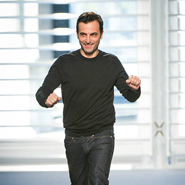Luxury brands struggle to find and recruit the top talent for positions across their companies, according to a new study from Boston Consulting Group.
Having the right employees can have a measured impact on a brand’s profits and economic growth, especially in executive and leading creative roles. Because of this luxury brands may need to rethink their existing recruiting strategy to locate the personnel necessary.
"There are a few different factors at play," said Sarah Willersdorf, principal at BCG and co-author of the research. "First, fashion and luxury brands are experiencing significant change due to structural market changes such as digital, consumer diversity--more international, more sophisticated, more tourists, millenials, etc--and a shifting retail landscape that is resulting in a need for more and different skills.
"This is compounded by the fact that majority of companies are seeking these similar capabilities," she said.
"Secondly, we see a number of new trends in employee dynamics – for example millenials have very different needs and wants than past generations. Finally, we see a much more competitive landscape with many talented graduates today seeking jobs in startups and small companies, technology based and otherwise."
BCG’s “The Race for Talent: Fashion and Luxury’s Greatest Challenge for the Next Decade” study, which was co-published with the Business of Fashion, interviewed luxury firms over the last two years, and conducted an in-depth survey with 60 companies in March. Eighty percent of companies were based in France, the U.K. and the U.S., and 40 percent of companies surveyed have more than $1 billion in sales.
The full study will be available in June.
Traditional approach
Brands that successfully deliver on recruiting, on-boarding and retaining new employees and managing their talent see between 2.1 and 3.5 times more revenue growth and around 2 times the profit margin of brands that do not do the same successfully.
"There are clear economic benefits," Ms. Willersdorf said. "The best practitioners see revenue growth that is fully 3.5 times faster than those of companies that have not mastered those key talent areas. They also demonstrate profit margins that are twice as robust as those of the laggards.
"Furthermore we believe that those who find top talent will be better equipped to deal with the changing and ever more complex landscape in luxury and fashion," she said. "Moreso, developing and retaining that top talent will mean that brands who are already successful will create stronger pipelines of future leaders to ensure the companies continued success."
This makes recruitment strategy imperative to a brand’s bottom line, but most have not evolved their tactics to reflect the methods job seekers use today.
Seventy-five percent of the brands surveyed have a recruitment strategy in place, but only 50 percent feel they have access to the best creative talent.
The role of creative director was identified as the most agreed upon difficult role to fill, with 67 percent saying finding talent to fill the duties was a struggle. This was followed by brand director, designer and pattern maker.

Raf Simons became Dior's creative director in 2012
Tech roles are also difficult to find good hires for, with 33 percent of respondents identifying ecommerce manager as a difficult or impossible fill.
Most luxury brands still rely on traditional rather than online recruitment methods, choosing to use headhunters rather than online portals to find new candidates for positions. Only 38 percent of the respondents use online or social media methods to find new employees.
While many of these brands have performance review strategies in place, many brands struggle to help employees rise to top level jobs. Only 40 percent said they have a strong talent pipeline and succession pool for executive positions.
Employer improvement
Luxury brands work hard to develop an image for consumers, but they should also work to develop an employer brand. Using marketing to attract prospective employees will make the recruitment process easier and help brands hold onto their top talent.

Kering talent portal
Like consumer marketing plans, this involves telling stories and finding the right channels to broadcast them.
BCG also suggests developing “strategic workforce planning,” looking at their goals and skills necessary to accomplish them and then analyzing the difference between the supply and demand.
Digital-wary brands also need to embrace online channels to find candidates. This means accepting applications online and making the process as easy as possible, a similar concept to creating a streamlined ecommerce path.
Being present on social media to develop an image will also bolster the brand for prospective employees. To spread word about openings, brands can use job forums, their Web sites and email.
Identifying future executives early also offers an advantage to a brand. Forming bonds with top schools to find interns who can become future employees is one tactic.

Columbia and Parsons students presenting a luxury marketing strategy for Louis Vuitton
Another is finding talent that will be successful among current junior level employees and candidates and then making sure they have the necessary training and mentoring to rise through the ranks of the company. For luxury brands that cater to women, helping female employees enter management will help get the perspective of the consumer.
Common bond
According to a Wealth-X report, luxury industry insiders appear to be less optimistic about the state of their business, with 6 percent of respondents saying they though their market share was going to drop. In the previous quarter, none surveyed believed the same.
One of the hurdles identified by those surveyed was personnel issues, which 34 percent selected as the biggest challenge. This was followed by decreased demand and competition (see story).
LVMH Moët Hennessy Louis Vuitton is also looking to create a pipeline of bilingual retail employees through a new training program.
The French conglomerate is looking to better serve its Mandarin-speaking consumers traveling abroad with a new training program for Chinese Americans.
LVMH teamed up with Parsons the New School for Design and the Chinese-American Planning Council to design a program to teach recently immigrated Chinese Americans luxury retail skills, which includes an internship at a LVMH brand store. Through this program, LVMH will be able to connect with Chinese tourists in their native language and deliver enhanced customer service (see story).
For brands already adept at marketing to consumers, marketing to prospective employees should follow a similar approach.
"In essence...companies should apply many similar lenses to developing a product consumer brand," Ms. Willersdorf said.
"They need to answer key questions such as: What is our positioning as an employer? Who is/are our target candidate/s? How do we target them?" she said. "Companies will also need to use some of the same tools, for example, comprehensive consumer research--survey, interviews, focus groups with existing and perspective employees, candidate segmentation and then developing specific strategies for those segments and using a multichannel approach to market themselves as employers.
"While there does have to be consistency between the positioning of the 'fashion brand' and the 'employee brand,' the distinct needs of employees are in no way mirror images of consumers’ needs."
Final Take
Sarah Jones, editorial assistant on Luxury Daily, New York
{"ct":"z\/L4TKhAhfKIukxcyZ5zz0yjxA03MdS+tK1PJ1zuuedAFAKwgP1dwIy6tid\/6mQPfHHDrV3PHB8Z\/FnQkY1kiM1Z21BfMZbviy9qoh3D5N94ekj935H6E+FjuRPaW4meha4pHtJNe0JLWBcATj9931Tof9cJMbCRnuuHxOi3O7ngfXGOECZfnyR9+WeH4mKHNiDhMDh6tvU3fpGPxtroND9mQaGnctPxa3rTk+U0F7uClZJyBH0SbUdAz8p4GGUXeoMlzemlVdUB8kTbEvow295ypDXzMRRBw2rRQodYJMpdc8sxh2b3xNE9va4wp\/RyzVo9HQ4k7\/P5Ahyk6AhkRl4Kf5zvNpO\/EacDLqjaNYw5mGWbQ2u2vvqd\/KyKlj32oOwyXu6L0z3nApf5XYQBSsIfwcHwZzjW5JOuLXLuxdbOJnLbQBLRU5B05GTyg5D8zAjr6yZjIL6cHJcuaYqc+N0RWym62peQe2fmF\/JEHEGB\/kAwcml7FgfkyhVDZ9beEeGJAoGwVjOUx+NVsRpfKcv4PeS+Bg2o1zzz8H2qCKVcoGSqvmkwtdGaaAdcm1+Kgy7V+Ui2diswcUXo5NCxOqThnmct\/p0DIS9+BzBShe\/XcXlR4pDYr4sis8sRDarDOMl4R+yt4r5MKE44YQjvlJUhaEzDMnge\/QUERnCt2N5EWeL2iFUQj1L67iKIH6g040S18EWCq4sTWkm78uWeerAQVeDWKvLdwGo8CV4a\/iKZ1YEc1c17WxzYroPJZRTvekHPJstkBNs065rj3zY7xHSxD+ii5\/pmhm5ckoMK3Ww6j1KiBlFiUXhnYCZjRQogjfnvkpcXpgddxN4JIp4F5MiJfmGaBGShLfWaXE+I1NVyc8ORzOdH6xI\/k27H6pRU0dvMxqKDqSyS6x0GTtbG6dpaI3HLmRH+4QpuAkLSe6k0qfVJCraU4U7jn1wgPdop5PK0sPn\/yKEEN7sTZWfHG3f2dZdmWNfvJ2Gq59K92Y38Au49f3XPWwzTs\/Py6vWaYoZ9N73XhZYC4MSOmGlYRk2eDxfKUqb+2JKryGBLBt1XCrHLL44ECQK67h\/3Vnp9inQ1K\/K757PnYp0BwNtDG9QVz+P6Z4ix\/XJLG27nQ9OR24e+Yxd2rysoaWU1WcA83DdDMs1niMR2SnNii8RZA+H9qyP2S5pipOnekpyrN65bId5oJSQZKdghftzR7QhVvIjaqRK66KMyLL1pT\/lZwDepHRdOq0cZfBsuv8vnSz7P\/cyERgwiqrTKqT9syJY1PvaRQL9aM+5WK7I\/M9fBJevB4sG49D7bZOTPXABW9pnUINhOjQJTux8rbCQ6qkE1\/d9WqNfZMbxaDKgwbKjvZwH81S+pBKTEIGFA7gM86sBpFiehWnK8WYB6+XB0Uiu\/+DfKtZrEhAyZ8DntloTNSp7LugCXipqAzlJHdkZJpEWlMBGs60FXw841YRMxDP9jNiK8\/FOlmK1tlNreSVEt1fkwyZAVO\/2mZ\/6\/3aDRJ0LsrNdPlXtG9FRVk3uLuBxzaK5OkI9lW0UvEHbVlhnr4SAVxuMYO5MD4wVwyD2tTytGSPruKP2koydC6gK2OET+LjJvtGzkqt3iEjPv8+y22c2ab6xpAE90pXge38HNII5MrVeSYTjlWKJ71p8cRcGyLkBgtkRMjbxFcrCam359aedO\/BB7yOkAqCIY07nEqv6brS34XKZQe63ZTquRJCG1bsTqDdxrEM3HJRj4zowieatKIYy5NB3XYoL383Dt8Fu2JdDQRJmsvvYxuUqZYBipVC74Hhc6op11zBGFMzpPWWWiezgU1xqXuIFKVaV5LVF2Q5jfmCTo0YOvSOMlZ04fpTjbC+4EEx4SIpspDl9dbbr5Ha3Yz26gk5or95XPkVr9E24tWagGc7HYfHEL1NoaHPqodocLKJDEt8KXS\/9MHAhNNnBSI\/7ta54F\/BhNiBMi6lx8BcDGEsxEhiqPfWZzezca34KF5Cxn7J+sLgEpgfdsrWonvT6c3alCuqVQBBUu3C\/0h8LDoeTRmivm1NWX9jMH7vwVoYiOq75B08v8KM6+C4coIY9+nncMpKaGBoO1TaByC28u2R1ar0OBQUdfB\/7Mt7tas\/L4uRBC4m1FjIbIbk5iJRDKERv4ZJaGd82dt1\/nx6KYdoxhooBkjDaAwbOiK7AmYWgPCXj6iabvVTEkhcEb0zos20vT+T+QF7n4bofMPxNezwZw+qyAOcNpDmnnZSaOxuxAn\/IFl9WwYvn6u5nkUczPal3YZDa11R85JQFhBNKLpZZvNFIA7n\/2xrI8bKbX\/GvvQX\/55dzh831k2wzsvxuKdVfmYTvES\/HqL+\/vKWHiLThcc0Qe6dOZ8Q\/QADfEbqxZZQrkA3Uphe3I2o6VAInzQTyOFG8II51EKFpm2qpmUqIIW+wySihVe78IKi1mJZ+D9KsUALZvKADE3Zz0imW81h+f2jD+SmdYC+2LnOM8oPEaUha35aCpOSIf8ckQyByzwMCGKome16mLyPYZtqiBYkevw\/R9k4YojIKp8PLK6rHOFaAHG51rEl1XCnwSjpzGQhOqSZSN+e5w\/FwxhYFEJsgQdDG8mnqfcDuQ6Dc6IkobnJ8O1Eu1OYTC3W7K+Q5+x1GMOIkG8he+dFSiJiiFc8ylA0oVg72MAd6+Iag2MjRk1BHl7uuDSoo7rK6w\/H6IFph0nhZF7HyHvGXKUlrGSJL\/dl40gwjQtARn5ceO3BvkuJQ7NYM\/JBRLiKazh5z7WmqpATD\/H1gsUL1Te16ZYy3il8pcvHPS7dhiGoFNzJShpCYGzu7i+bsNA0VYZb5ufgzubhe7iId0W8Q0XqQep8ot1mIRFfSL8F68D9gtQkk2e9WqoWhRJ\/Zqqp9hR1vsGsy\/3QzXMzi6nQgaqt7zq3kIRca9UOBFDfsKgTW7NMQ+CbeipNhLT5LZdVhOhj0jWqRW+3h8WGTl5cEZxiTqOK1bMVU0BfS29C9+jWTm\/oFP7\/5OS8vQxdYT7B1jL0E7ZOc4Zy52ml499ZRCtmzTeUfa2te7qkFmM08zT0LkeeU4PO48Jyo7T\/AlrE+9Wlj9uVdNPdYaWTS5Ty\/yMIkPUVFRDGp\/ycBQC+19RB53eguRq4nLOYb0PuKZmj560Dz\/PKbovc3vBjxI+9pCMoAeb8PvAwwhB\/BthKM\/nm5tRfA2pGZSbHzX1KYmtEpmivWmwDpfdso2sDoK\/rVBFv9Lff8ORExuuJN7Fyh2nYrbMr1RnJMCntZrc1Z3Vwb7kh3w7PQQ7vNFcpUpaK4hLC6LuHXmH5WkRWoQUY4jPMjylDbqBiY+\/LKC5QZK68SYduMpVV+hG04kFyJHWv2QV0hXcphPMFdWk9y\/DX0tPUJzQ3RwSqEhIEph1L3yMvhLdcsGv5iAG1gGNo7h832O8Rogf6aoOOXwoFPbsagOKnF8qxYMyV6\/64TwscONTiQTWvt2fkWLG\/MwEOP0enWfdgKml6XwNPt7TEhHBMcvMYF50PxOoifrVZ\/O+g1DLJRjoN3j+1UYMyQwvDLQB6\/G8pTdu9kb18rx4vGK9vjlJTCmVLNw3bJ9WROF1s3hFFaGhStqAS4xmeJlH5lMiY4pGls6iIRb\/TlRAjqx9G+0r4KxYzcLrdQz+RiFB1CQY5YPpTRyvcNN6+ZN93tME7Hy3OIT0w98FKzTD5PQE68gq3qhY5ongSh+PY9CVPvhh\/6rV\/ynBOW6qW\/4mxV1XyUPTMO7of6hQFC42F+CFKt0m7JDeU39WikoTGDMkOhWM\/BpMOr1SJxY+Jgd+IYz9ofAgyYPxsXY38iitxtZPaWw8TNrVTE2Mcq563FhaDiCDUJN1AYUYLQfRK0CI8cJNtso\/u1PfO35jTXMkDBh3\/Hv0wtvxSHc0jc71PWfxYHQLf\/YW6GcXUG7+cE1l9p0jdYVqxo\/6tMhvqG\/boF4hfppxVwwyklhgzsvcDARPnzJfxLz9EsT4U7L+mwvwQspluV3bdNy\/m+TQYL2VuYKHjp63a4VkkGQ6IpIDQtWeRW2BDJDcccalePWR12xNQK6CMDuhnj4MitDnvYTYkTYZwPZ847Ky4L357oAhkDQfmyLtgI19U7KpNcNoB7gmV\/dKBWFrQ4oTFmwecK4hWaETDxB75WU17aMCpv05ve1TDnt2emmacHNyqH7eILeGnTdLlJmbJNa8+ecOkr3cxtOYC4s9GE7nAD8NI+VK8NOBPSjIFKzk0ZyjTP9yrai8R2rOgggoRj+w7x5MJSDqBO+OJzsIHwwmyn8xTsl52Vor9wQniJqCSPbkVzF1usBM8P6he6MHOg5wba60d12Q2sm+KC6SPVelrcLezNNpa0Jeaxy8jOqn1Amz6ENLC2gIUJmrUKg+PVESyCanmzVVLKmrc9tvSpZ1BzVGcThP+FHO\/UDoO5OW+5VJKjn0zhbvIER5Z6T9SwXwcuw\/zQRZeACZng6UxQOc2UGsnLO+728AmMhRU6LJyGhd9vv0hrX6pDNBn+o4Gk1\/hj0Uh4bohsxpXPlALbW3ju7M1vbprFzD7v7+SW9CIQu1sbkIYZTEwMJwtkicpwMCS+jDsdGJ+J5W3IFiOi1mSHaWLh+rMc8AKWBja1eZ1PfKmI\/egZtR\/yyHA4VMzanFAbNvG9YJmEmrYGb94Bs22mSSP0Su5okYabpz5wpQTMyy5BdXGxRaGsQ149JY9WsQBh\/iOhs8J1n6m\/PJVZGpLtjEOnMaVCHsnuC+cC8kPH1pEPjtc41mYquQCwmt0Ys7YNrfFikOF0x+7FOCTtRtcKaQy2XTsXK9pvNEgAqFxCcUKvr2y9y0OJ0ttvmLkA2qJCMIjXQkVJxNWLgQZsGIt0etJkRgFPYASCkIDqi4zKqD+64gqoaa59QtUaPCEHTJ+AYGSCLLHh8qbBo\/AZyWzLzQ7aurPOboGK\/+uoW3FIUzotA\/5cUNI9PJPxuxyjWnWyYqsUnR\/oLKC5A6SMmOYmhPJY3nTRQB0p+DTbJbL3pimihNbvzswwvVJbBC+yMPsyro\/qzPFzftGGT5Jki9pG9AGOAo\/9crOcaKjtGnixbDlRT35djXNG6+34xCZzEjpfIt3b8W43B1M95t2nXzgGb0YAFwjxbA0aF2wBIjNRBanFhovLl8quy7DpX6gITXTePd5tRqYeZhPbWR2Ro\/QYSixUa34DSykxyIzyWtGHT27AwaGpv3QPa6r\/be+AsH8R3YXSqdtFyEkqiEoQOkAbkmi+rkSjPSBtaUnAtGL09tNuvWPgBrUj8fLcDWPNomzVMdFz74pG1edjBe07UcarQB5WI0P1QyivriC1zXLK5gn5YtWvSyODaIu8GkppWa9PnK\/AtUStnHjNdODjskUHjul\/rjH7lqMXGukBUz5+VhbPglWYN5vyEIGpHrq33nga3Jxf62JTN7mNYnxEBvcrX9cJGKMJ1B88tYJf0HmHM8NGLOftCYD0URaCWvNYpbjL0puDSZKpjQZhSlDOB3CD5vCl4H1RpN+NRmQj7eu+2cHS3H1HzCal72umjUR7dFOJpzyg1rMPPGtFRs6jpussdIIuojMX4MstTXvCusc5jdJZYHIdZUQXl66OJO4F7eOKvZLj4KlzIOXvIwq3h3jDiyd9ygSvM0JM3wRzXfTZLnVn+1BIgLdwZuHKmiH9wtUEI+mWBTUhbPEUH8ND2IpBTwZ7Af14LzFNzBx1kjrdtUdiyP6iWKFaIq9pyADph6QeNcQT7IBtkyP\/SzYZ0dfXisg+wIxeO9TXK\/YGRcqGRX+dbdc9laB2AWoz87TExHZlOsU2LtcgoGgd67Ibjp\/VKA1jW0CBxDRUK8a1xVmUcaSVX53dC4CStvssxxCwS+ZaOYv09uz6c+JEzB1OfSJqIZPrZqmYqb1AGLZdQJRxDVVr92CMW51yiuf5PVI+vdNZxhwE7xskdLos1MBzSHduDJ\/dud1hnISJu2nF7D0IuCK6uqTNYeOCAgISS9ICxGpVdJSc7YDBQjKCi729ZYEyMswTs2iwYGaM3p3zrDImTk\/MHBSALJ1f1mBXGWgk1AmxG8k0U\/anGE8wf\/SRc\/41Fc8VbfOV55T6xZtSagY3o\/qYEOF5JN7M3DaCXSfaGtu24DpyUMyEMGrZpKVtDg9yLeZ2khR1LbfIPoFssyvZ+uQDChXmAYoHxAOOOSgfzZHnEzO9ib1al3YUdm1WfNZ27IOVF++zhsdWEv9FigUi7cC7NA4WcsJQxVIs3CRmcD8zzeGeOSYE2E0tH7kBQvQIL72ZMjt4W1PuBo788vglb+sJ2DzY45b4AWytBwuObzzlgDhbyPjxum3O9nIPklg8jIrx+PUWcCM6GSbfi09zAr2VofL9G5nnlnUGDlRUxcuS1lTGMo0S3ji+ynhpRcZtykiyH6beooG8HIuicwCdE1+9H5vMrcrbKn1IwX5vy961VCBTHTjfFAnKD66tDa95Od\/H9KZ3Fm+uqAgR8wpSxVS5CjuY\/m9BuV7BllV6HJWhuBK8mUUfCpsC4\/ORW8Bhe6qPWalmdgu69q20P7J1ZonRP2cJJZqGCDr0gcQQXmgGCmIUqAPlK2XD9LHGLy59WA9Wi+yK0AIOFhwebEb5meklBtlSLExv84ISkoARmUQKuhF92JjACc55Ix0JPt+7xJmAhQIOruwgnkGcv1xqaF4Ybl948QwkRnqyPRYihmi3ryn4y\/oYk92eDZEBCcVQk9M6OIl2UvzjfH5o5Y2SG3jZOJ3N5Y5YyeTkNczuze8sBLgQp9R6Kg4Y75YkQv8bQCqyCzM775Y0zHaDzQB\/aqUYFheLiKoA5KKaw6IlFTE8GuqW9az5xRuD8y9dHiurNwZqKqIfLVX0wKdI80CBJT0Y\/ViDcBW0kQ+GqjSUB+4CRshkKo3y3Y0m5QG3XHMVfYMTFcO3q2sul9slLINlaMZH06TxqnkIp4jmT7gNhfvnuR9nJAiElJNQPmobOrcZLMTmrK9o8r5KQe0yLEQTdiGwWgy7H0gPS+vCc429gvzYFeC2a1MZ3k69HsJxIfKbTwvAA8\/X0fstuG4oFmKNEipHKJTwxPcR0ddpR17fyYc4N8Jq2o1elh4u32sDDOr7BaDBGS8\/RfzKKn74LWe6BpLsm+vManGPl8HsDdIKocC\/VUYcU\/zwz2sAkP+\/zSIdkdjzAb6lRQPdwg9XRaNoavmTNNozEvUUMj3lUVXoFRz9QIf1ghSnBrxat2f4VKU97VxxSA7wipC2y7vtPs0AvTHsqlBZLKDNjYf8wyY79PJsqiWqvXw0eott05Xdq124ViGMszq7Liy+xvsEx44hBDMF2y3ZxdkTFYFoCck\/S3TpJNafAHUjAaSL5\/26Mb34oJpiELKCXc0Gvg9xVFrbeLPs+VGtc+vvfdUedkqBUrq3oJydIA7BFKqAz6i9GbjOdGFwihKEo+9rsqNWT+A+omyISiHmoIatU57B1vlrTpmktfHEYDLeHh+3wT92bJ3658yRJlHC30sJEWaiFpa6o1YcYcPY4wAu2nldMpnnI2PbngYt6KDWd99w8eaNjdVEQvNXhlRyo2FvfnpOFeAxnxgLFjAOAXuDzEOpnEn7aHCqkoIlShmmkaTbZFwM4NyCZFDQDCn4hcBapvmiNSaVmU\/IkKq\/04mxthDvJRmZj7HTY+S8XZ5sM22LrxPVZ2HHyVd3vTM55ZB\/UkJNpor2Ek5Rx\/m1QwJHtc3oc2XrsjCrZPerA5RN90El7ylZgYTYZBiP+dr\/MPGz68qxj3dU6YUkI46m5q+6KnLtuSI4PiVk5DtcJwddu5mG18KEa6bRmv\/ISq7f\/+9S8Hatz\/To5yglHxV6a2zZrI5jEAgtKJoL5oqvCHECTqN3u8zUviic9Zjf1SK7Qmw2OFJAltu3gugcxk940Ki5+FUISwxDXIG5l+bOsacbfESxvzqQTH03YDMChbNqYfzJH0KpfoC4SUEaj31BM4uppK8ZDjECJHbUzwoNA3AHROICC+C0LUWy0G0\/PMQYwIIZzZnZFR+URVXzsl5fRjCluQ4GCjDev\/RiWLEpfEmBr4GPY8PEDp8jnPhgSK9JGTNwGzVKCV6D7q8tF5U7AAdeFGXesUXTy9hhSGKRc\/lXMbFWszWyo9g27l5lWz0sS2RFefIUa7YG7Icw+1tIEVX2Z\/zEKhgfxdNRgTXLDiHKIvPJirTpK4k9Wl\/79lkucA2ZrhM\/\/lHadx+rCZtlStL9WXiPypseqmMouvwTDkVuvQOzlrVrZ5wRrNuxtx7p1gGXuZKG2xVAH+48Yc6LDibbM8BH6LvLXJ6SbiZS4\/SbM2Qt\/eSYykpy8J+HCwduvPdEi\/+XpB4+9Q\/xsTfPPG5FdEKpdrYTyLK5UBlKA8cEKSrINYqsBV8X\/MrVjVL0dd+wiwCTYHbtT7jQSiwkuu61EMVKiLjC2OYS\/e3zy2Jkji4FWxPtZjCQd07NUDkfQufwaAcF3DVztL0Tj6n8aGOZAKMMz7vuQqqSTl0mPyOuh9Aj9QN1mJ6UKlSMMQTYf+COS+MYWdPnoQbg1fA38PsfGdb0rp+KZkj1ORQB5e4Oq6WcLzVtYX6vFnu0D6W8hOJO5gvXftA28jvKfZ6lAK2haoCGF++Ef1eROtcIEn4\/Vf4\/FapCQvo5vbBDf+6Vs70VRVivuwBIwLHTBRudCsDwbbIxexJwoL4UnedNv3A8Vp7wjiDSjCwdCf5CtIPANdFiu\/Cm9XdOukNFKQBzr5JUkrNg8Hz6QdunxaYy9es0GXp5vURhB69GtIIMnAqgTd1nwAwwAxhw6+v13r2VHDqL+A+1L3HG1hsHN+NyyCujLK7VOMN0xuWJ4BXI6\/haM+Z3DLFJ\/0TkkXwLLm5OUPoRKOUpbHb8xdqpsQoumLXv2Kh70VZgtJ8lDXRwUs\/Su+\/ErSSx7W5gDJMUsxlaNYhbFmHs7XFInS2DKDfGQ4R3rjkt222ktse+iGXSUOUeFOWRAXvPZ46V6MsCr+iGGg8z90M\/R8EHDS\/bqO6Y6yVG6fhr9rAmFWzQsrWX5NOG+DlqoCUKyrZyI7Q5Svx8tND\/KXj9Y1RTVTAqClo0\/kTRF6RH1HW8XLQ7aBf9AXdCDNY7dFQL1JKNuV0rCXC8XKWi4a8f6HO3H3nLI+H5sMrpWbomYThMC7kAlMKy06cxXcCTIgJbYRD01q+JgZnolxgUggQCg19Bvj9lwI37z72D1dAK0GSwM\/yITmu2itptYWK2d5CsKhApXMZ4MBqiqRDdcCXVHQ6fv7vSDIIOkqR\/Xb4lbbm7CXw0TJp4mLPVxTizWkjBeODINmBvzP8AFRgtAa\/A7qJRuScT0ISoffL9vsChUlPXqq9xnSuNsO+Sdn3G1r5wK0ZVl\/5NifefD1ypT2FulOVVYCQL3FVMzT1BjqpQATigwAL3DgxRxVMKgyNnvK9vACs74tP7Exr1R4APNWZQkd1FbjhPFzLqsc5rGkcjtWKIXpjltG9eCJyx7\/NhZ\/H2QgOguT9yV+zGjHC3AvrKo\/k5gZio\/YJGSxbkPHyReHnNfn7GY1Md41cUQy8+6ipnpnLR\/+j\/+3SHdeszUc5hNCzOmOVULXgwIlMPAL3l6p7QHzLEVCFAwOBPDyy+zkMEJo1\/rYrw3jlw+rRO4oL6J8VX4gwgwmleh0ZyI2Gh2PSmRZA2ecQqx+FPRMdyMjZ5Es+GCx0MyyXjY2LKnUZbNdOH9aUIaB1cjPZDE0R9ko0cP0kR6ez3h8OrUMRpvQoeiUVCC3f\/F43BVylSeLlMi3P1A9pykapG0VRXN94MwO+FmHo6\/9KCw9z1zMOb1a2FtE0aEq4QxEeuK57TdsdOaQC2q+o\/W1I36GDUY7k0RHRCmnJH4IkisP6ra9eVYNP5RoI7wJgQD0e1MJf9P04EZc0rwE2mz5lHVCTVBJALaHbo4kwhdCtGefccbM8Cr2Ssg1dFzvUqDbRfjB+GDRL9sMkrcpbN9vhF5UaGNDeKD3HnOMiui95lg8IWi6IzQS0qu7ywb+pAKFiwhsPCXk2FScU6Io25bIL5ukWJDlsObXpjTKCxrrN2357eo\/RYh7gTksLV09HdgoGjwDaQ7IMXZTkr0+AUiQXPOmjbGurF\/5\/7CEn2H9R1jv9xUfaBPoT9dMQ06meRWMnKuJQEq2qifZkFoSXGvJvwvT6k\/WqivgVIxR8s+gCZcvU7TDGpw77UXOigGcyl2LLLz\/TQlqMO+WBm\/zXdy6xfuocyCMDqRHRkPrDPD\/8zJEEdIEd0yxV0pGbKjF5FU35iZ4BM\/mDWdkSo\/p3KX2Kc1qS1vRly0boZkI\/WvkPXj\/vXQwsBiKqEvSgkcwA0bj4+eSdyJK52AoYtLFFP6DjPwfOlrjTDi770MXLNa0NgVJKEqjVQsBo1LTRUGRPeKSwOMvNZGgpbp0c5uHU9y7gSgjSvwhuJcvGLM8A7CwRzPbEh3kWr5Ik2XxmTJgr18c4Y6ZqQOJiOhKDEQ86H+zjdJ7eWG+DJebcP1UptoSpOqqu5t5JUDmKbB2\/78gf65Nm0tAprJux6tgYD5th4IX0B8Hf0\/dARh36FzXSVS7866Cac5+yk76dp5ys+bNMz8H4n4T+U1+f+8nLB1I8yNim0psImbzn0dJcCpVIIQTJv7i8dO5z68hEGw4Ll3lbU188dyyztrnqXO4lg8MiUoX6cJdJmKf2hEoSeaeggA7FV20CNiBy7B+0fh8mSM4C4nO3cUY\/SxQ22jR63BkX79hRjgmuEwB3AiHi6+wpt0sGNMlN3hH7OBMzyLVKQOF6lSIr9u2lb9tMtXKdQHcHlxJ5gd7iQETxM69qJCThReUS\/BOY00H2cej9d6i6dy99KsU6bitxBfNUrmDm1mro1+AbD7XJxCLKeSHgFpDmUqybnmBtV1K8Fxajdum8tGcaGaA+ciy1lQHoi1TorapOeDkzkThI21keMCGQAxm2Mi6nqii21AcB2uPbUD1E\/BqWmPpgFz71Er9gzfQXN4E7BBUyoPB3m0Boa2or7yAXdJQj85hOy5ggsOSJdtlGtEgnEUdSJxdudhNIPWTllLRkDBEpvid283fMtITRsUfwYauPL6TdxfKgaVIlFYXUF9J3mth+EGiTe0jFwvy05Ydfy+m9Tf8LpL77KgLaY3izSBMPsVSezN9LQd0taFcbkDSRuGEGiJP0J9uNxry2C5oIKCp+zsU+EKEOOBI1pbu4iAKYD\/7vtBZxs7YC1x2qTMunIHaB9isn9Q\/osQQdJIu0kv40qBxhoJRD\/oXP31+eiR0QsvrbCzlTV5W3aHInKZaZ7H0\/y3\/BmSq11HLrTSiFJvF3uIz5eSfW2H+7seyKmdC65Ah30BNvvjQWry8GxgIuPMGBo2\/gLjg5GcRddois+t\/Fp8D1is\/97CP5Qf4\/ZoUvX6AB4\/XmSJdZeNb+yv26O61uJkezcz2petjnRniSY1+V3775\/\/qT3pdHH0v726IxWgyb62Dl+eEyEDdIolm9UQoT\/C6HfCTHc7vXuCJfOOJva5MG0WQohVF5X1jQW\/B0TlfK1RjMX3KvDVW0aC7zEqIEEDWtOkelLPv3\/Fqolkr5+UbXNLuA9YokvWqQQX2ZVw3K+01mIRK5gtP+ShBuo3C2Py\/LXQgSnFTCnXbXjwePIMpg6xHBd0+5KKDrFeHyJomPWZqJa9KJoCHuEmCnFdliScZ8Ylj4OxNZxg1vw4X6iXiqdkM+lpVW2glKnqCuofrv61B0i2\/dtyOX6nFEe\/m8g+arVt4eurJU2M2WZlW2jfFuME5nJ3qhEB5+x7LwhC25jaDamAvnjHh1JRtUn+\/iH\/xM0+h47jwrQUP9+rIFTivKes8e0jPQ5PM80QVpy4VENcId\/JZtKte1MqpBlj1KZXOZMTj6\/cUbqYdIiSuFCi5\/Ng6iFQcujCA69w9wmCGoUvUPKlIiaxhL+j9h1NCnzNo9K588jkue4V6YKz8iZJw+LE4GTUtRUCmen7oL2ENYgjXGbnpuUKOirSyfyXGZRsx4Wnoia5xyFwreAsDbJPj\/H9kRxmP5oJSKTEbf4vIedXbsaNc2ebwRigErgDzFf09+qPXlmaQHoV72NZj9fefs96aSIsJ8LObXHq7ziZi6PnPhOahyYuKQ8tHjjfxs9JdPTl9aLviS8Sc\/w06VfMjwAAxzdL7WS6xQMTQTuegaRSKj5LaBL0vhXaOsoahcwdW70U+OZeymMDpmWWg4uwc60BMiekaVMyszCVrdiDZv0xcyGflogcMRFQxSXituUyumts0zM+iJkIcfjPN5xEnzwCUEqNOjO9Lms+XDwpSeS1EwGo63b5FdnRxKGy+u5eJ5Ro0bx9Og59Tqu82gEj3K7YQKzmWWpjgEfrghepXtIfwRAQUME36XIGI38xChTEletRkwO2ZqRgXsCG45mouiUBgvEJUIGYa+e8vcLioOtge6gTljzRYNOk1F98w72r8gMW2nqYQVj0rw9XPZSdva5L8SmRPWqKOmzVuEsC+SIVXQtf56Tru4GDQ60IW5aYKR4d9GNCiJv+GA4h8j\/hRQBOvN9l94\/pJanXXgrO1GXD\/NaRp9+5W6iE2EMo8ZjkJ8jNNxRSla2evtf7Z9j7NbaMRV6o8INB1n2TFf2LM8so85WHKsGOj9wvLlWWIO2ikMw9N+GrayE86lnjhB1yR87h6vJUbB60LfDH3SFFiGzFK5OYsI0TPRDSoFL4vG22xx+Ml4o2ELZUR5cRy2IWIbLyB5i1pzGA1WVD3fYQXRJhCVmzc44L9xr7QIrvKghdbdYgJJ6y1wWdH9Zp438J6q1fSEYcDzLStkenGGKmolB3gMl7g7ySmaMQrt3hTXbgiu4GkP7YrJzmjDcsRVy5IjLL3JyoH5iISV27ww7hAy7lzgqgCt5HN5jLL6EkY3zC80EbcNb8QyuUB\/VLiO6UjVu0DIwSdNFIIK7BrP+cJpIwJ6xaz70ygVoWU7xdaAg38BWf9jAB1G2V4sAlAbveICTrTNjMGDMEB\/5ggOPrT56Z96bv1L5BAtd7hdM1+Apt\/ra0poI5uUMa4uArUoIkysyKFtxmVvkLGWDGe4bD2nmPi2+T+JbKvcmwt8ywVhL3pufQjqwkVGs\/R\/9O63f8siTLf4ismTgDaq6IY7R5IX\/x\/cOUkH4o4BwATCWJNS2ZDvMfXpppkQGnpKeepBdnvbQf1+BantS51JJyOf8FjXk7iIYWUMcaIsG22YLjDINRbT3liR\/11yeu1Y8k5C27DpeT5IWvqknYQKohr+hiCObgfdKmDOIq6NE0THY4q3Ct1CrNUplkCDzpQ+mawHeVJWbCzVPfIPaJDF8C11ckNNBm","iv":"f2eccf408528347ac3713cde6dc73dd5","s":"11ba49c85c29a1d2"}

 Louis Vuitton hire Nicolas Ghesquière recently showed his first collection for the house as creative director
Louis Vuitton hire Nicolas Ghesquière recently showed his first collection for the house as creative director